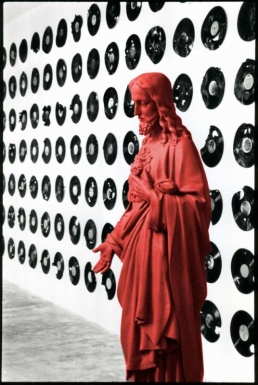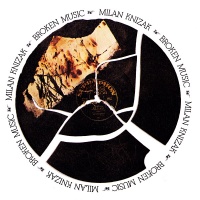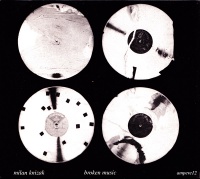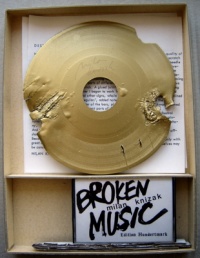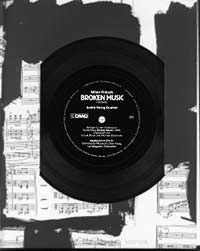Difference between revisions of "Milan Knížák"
| Line 68: | Line 68: | ||
via [http://continuo.wordpress.com/2009/08/19/milan-knizak-%E2%80%98broken-music-details/ Continuo] blog | via [http://continuo.wordpress.com/2009/08/19/milan-knizak-%E2%80%98broken-music-details/ Continuo] blog | ||
</blockquote> | </blockquote> | ||
| + | |||
| + | ==Literature== | ||
| + | * Knížák's Fluxus event scores in [[Media:Friedman_Smith_Sawchyn_eds_The_Fluxus_Performance_Workbook.pdf|''The Fluxus Performance Workbook'']], edited by Ken Friedman, Owen Smith and Lauren Sawchyn, 1990/2002, pp 63-68. | ||
| + | * Caleb Kelly, "Milan Knížák's Broken Music", in [http://monoskop.org/log/?p=566 ''Cracked Media: The Sound of Malfunction''], The MIT Press, 2009, pp 140-149. | ||
| + | * Claire Bishop, "I. Prague: From Actions to Ceremonies", in [http://monoskop.org/log/?p=4791 ''Artificial Hells: Participatory Art and the Politics of Spectatorship'', Verso Books, 2012, pp 131-140. | ||
==See also== | ==See also== | ||
Revision as of 00:03, 17 February 2013
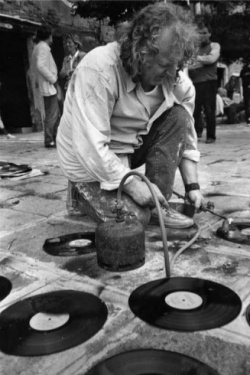 Milan Knížák working on Lenin for the Fluxus pavilion at the Venice Biennale, 1990. Photo: Marie Knížáková | |
| Born |
April 19, 1940 Plzeň, Protectorate of Bohemia and Moravia |
|---|---|
Artist and musician. Born 1940 in Plzeň.
He commenced his career as an artist in 1957. In the early 1960s he began creating what he called Ceremonies and Demonstrations, happening-like events that were often performed in the streets. By 1962–1963 he had become part of the art group Aktuální umění [Actual Art] ("Aktual" from 1966 on), with Jan Mach, Vít Mach, Sonia Švecová, Jan Trtílek and Robert Wittmann. Aktual staged numerous participatory actions, e.g. A Walk around Novy Svět and the Demonstration of One (both 1964). The group also published small editions of handbills, samizdat magazines, and created objects. Aktual called for the complete unity of art and life and focused on people, their actions and awakening people’s awareness.
In 1965 Knížák began creating broken music by destroying the vinyl records. He cut the records and glued bits of them together, scratched, sellotaped, and generally messed with them, playing them and recording the results. Some of these are collected on several editions of Broken Music.
Knížák’s contact to Fluxus came about in 1965 through the mediation of the Czech critic Jindřich Chalupecký. Knížák was soon promoted to “Director Fluxus East” by George Maciunas – and this although his attitude to Fluxus remained critical, since he found many actions and their setting in a classical stage context artificial. In October 1966, Knížák organised the Fluxus concert in Prague, in which he appeared together with Ben Vautier, Jeff Berner, Serge Oldenbourg, Dick Higgins and Alison Knowles. Maciunas already invited Knížák to the USA in 1965, but it was not until 1968 that he managed to obtain a visa. In New York, he participated in the Fluxus events taking place there; in New Brunswick he realised his Lying Ceremony and in New York the Difficult Ceremony. Maciunas prepared the publication of Knížák’s collected works as a Fluxus Edition, but it was never published.
In 1970 he returned to Czechoslovakia. Always under police surveillance, he was also arrested on occasion. He received a fellowship from the DAAD Artists’ Programme and came to Berlin in 1979, after which he was frequently represented at exhibitions in Germany.
Since 1990, Knížák has been teaching intermedia at the Academy of Fine Arts in Prague, served as the rector of the Academy (1990-97), and as director of the National Gallery in Prague (1999-2011).
Contents
Works
Broken Music
Knížák: "In 1963-64 I used to play records both too slowly and too fast and thus changed the quality of the music, thereby, creating new compositions. In 1965 I started to destroy records: scratch them, punch holes in them, break them. By playing them over and over again (which destroyed the needle and often the record player too) an entirely new music was created - unexpected, nerve-racking and aggressive. Compositions lasting one second or almost infinitely long (as when the needle got stuck in a deep groove and played the same phrase over and over). I developed this system further. I began sticking tape on top of records, painting over them, burning them, cutting them up and gluing different parts of records back together, etc. to achieve the widest possible variety of sounds. A glued joint created a rhythmic element separating contrasting melodic phrases... Since music that results from playing ruined gramophone records cannot be transcribed to notes or to another language (or if so, only with great difficulty), the records themselves may be considered as notations at the same time." more (in Czech)
Broken Music (1979)
Composition No. 1, 18'56" OGG
Composition No. 2, 3'27" OGG
Composition No. 3, 4'25" OGG
Composition No. 4, 10'23" OGG
Composition No. 5, 13'52" OGG
Originally released in 1979 on Multhipla Records.
Reissue released on Ampersand – ampere12, CD, 2002
Curated and Assembled By – Walter Marchetti
Reissue Direction – Dawson Prater
Edited at Harpo's Bazaar (Bologna, Italy)
via Direct Waves blog
Broken Music (1983)
Untitled (Side A), 28'35" OGG
Untitled (Side B), 32'04" OGG
Label – Edition Hundertmark, 1983
Format – Carton box including a C-60 cassette of Knizak's Destroyed Music, signed and hand-numbered 1 to 40, a partially melted, hand-painted and signed 7" record, and 2 sheets of information text.
Cassette was also released separately in an edition of 60, signed but unnumbered copies.
via Continuo blog
Broken Music (1989)
Details, 28'35" OGG
Label – Berliner Künstlerprogramm des DAAD, 1989
Format – Flexi-disc, Single Sided, 33 ⅓ RPM
via Continuo blog
Literature
- Knížák's Fluxus event scores in The Fluxus Performance Workbook, edited by Ken Friedman, Owen Smith and Lauren Sawchyn, 1990/2002, pp 63-68.
- Caleb Kelly, "Milan Knížák's Broken Music", in Cracked Media: The Sound of Malfunction, The MIT Press, 2009, pp 140-149.
- Claire Bishop, "I. Prague: From Actions to Ceremonies", in [http://monoskop.org/log/?p=4791 Artificial Hells: Participatory Art and the Politics of Spectatorship, Verso Books, 2012, pp 131-140.
